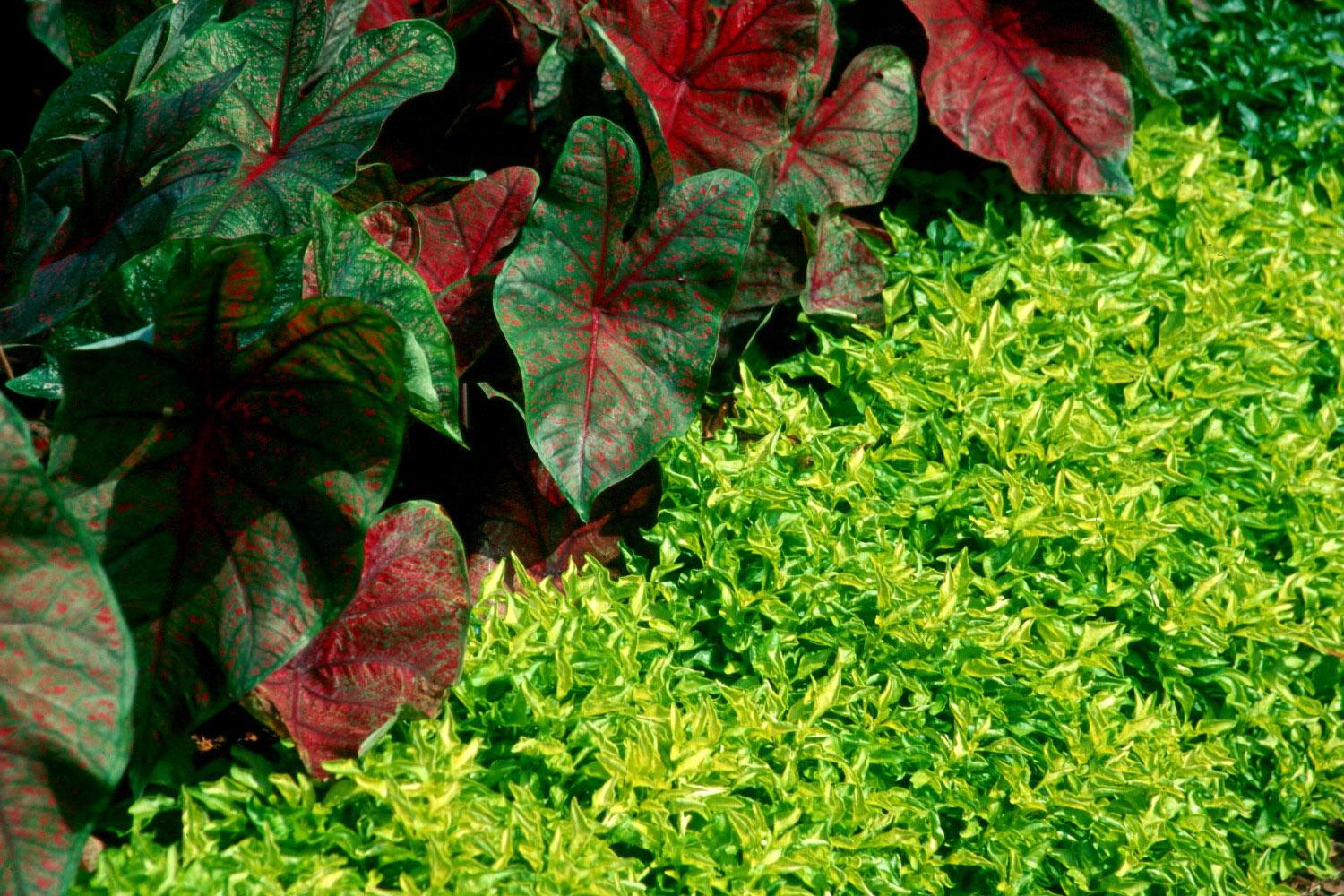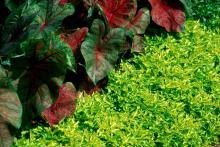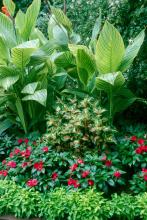Information Possibly Outdated
The information presented on this page was originally released on September 2, 2002. It may not be outdated, but please search our site for more current information. If you plan to quote or reference this information in a publication, please check with the Extension specialist or author before proceeding.
Plant Joseph's Coats for enduring beauty
By Norman Winter
MSU Horticulturist
Central Mississippi Research & Extension Center
My choice as the poster child for tough and beautiful plants is the small tropical plant Joseph's Coat, which livens up landscapes with its richly colored foliage.
From late spring until frost, Joseph's Coat performs admirably in the garden, making it a favorite of home horticulturists and commercial landscapers. In fertile well-drained soil, it is a problem-free plant.
Joseph's Coats, known botanically as Alternanthera ficoidia, are native to Mexico and Brazil and are related to celosia and gomphrena. They thrive in full sun with fertile, loamy, well-drained soil. If this doesn't describe your soil, add 3 to 4 inches of organic matter and till to a depth of 8 to 10 inches.
While tilling, incorporate two pounds of a slow-release 12-6-6 fertilizer with micronutrients for each 100 square feet of bed space. Set out nursery grown transplants 6 to 10-inches apart in late spring.
Joseph's Coat is easy to grow and looks its best if kept sheared to keep low growing and compact. These troopers are in the ground a long time performing a valuable task, so water them during periods of drought and feed with a light application of the fertilizer three times during the summer and early fall.
You may very well be thinking if you did not plant these this spring that you will have to wait. You may not! Many garden centers offer large, high quality plants this time of the year. This will give you weeks of brilliant color.
In my mind, they are superb in the tropical style garden. Try growing in a tropical bed with bananas, elephant ears, cannas, impatiens and coleus. Interesting combinations can be created with caladiums.
By all means, try combining with the different varieties of Joseph's Coats. As a student, I looked forward each year to seeing Texas A&M spelled out in Joseph's Coats on the campus in College Station, Texas. The letters were spelled out in a maroon-leafed variety while the background was composed of a lime green selection. Whether you want to spell something like the family name or create an artistic design, Joseph's Coat is among the best. The choices of companions are endless.
Often the Joseph's Coat is sold generically, but Filigree, Magnifica, Parrot Feather, Tricolor and Versicolor are a few of the leading selections.
Look also for the Purple Knight, a selection of A. dentata. You may not find this one until next spring, but it is incredible. In fact I would recommend it as an award winner.
Purple Knight was supposed to get around 18 inches in height. In my garden it has reached 36 inches and spreads with abandon. It has no problems and the deep, dark purple leaves are produced nonstop in high heat and humidity. You will want to place it to the middle of the flower border. Try growing with rudbeckias or New Gold lantana.
Joseph's Coats are easy to root by cutting. Strip the leaves from the bottom of a 6-inch cutting and place in moist sand or peat with at least one set of leaves above the soil.




